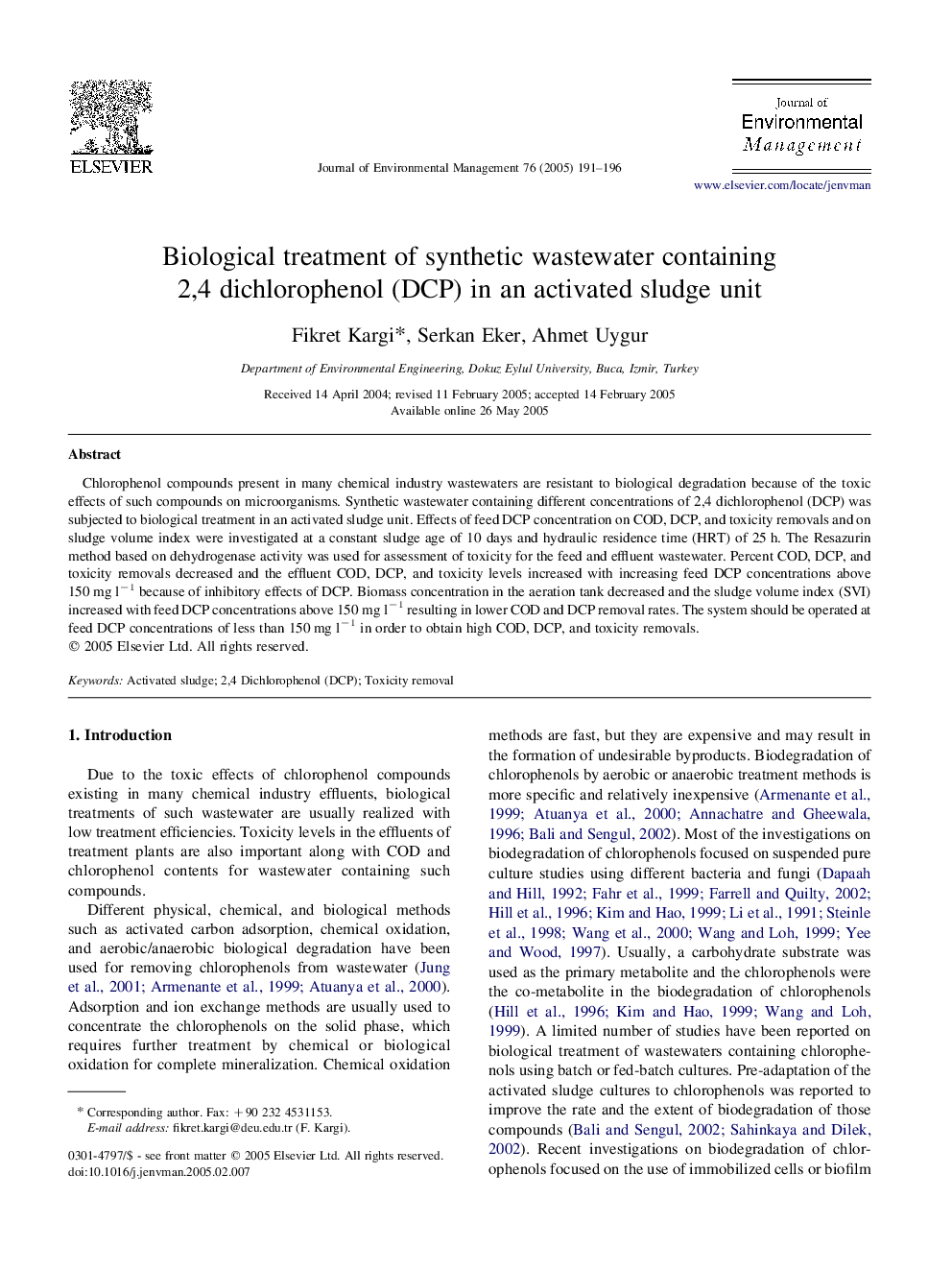| Article ID | Journal | Published Year | Pages | File Type |
|---|---|---|---|---|
| 10505825 | Journal of Environmental Management | 2005 | 6 Pages |
Abstract
Chlorophenol compounds present in many chemical industry wastewaters are resistant to biological degradation because of the toxic effects of such compounds on microorganisms. Synthetic wastewater containing different concentrations of 2,4 dichlorophenol (DCP) was subjected to biological treatment in an activated sludge unit. Effects of feed DCP concentration on COD, DCP, and toxicity removals and on sludge volume index were investigated at a constant sludge age of 10 days and hydraulic residence time (HRT) of 25 h. The Resazurin method based on dehydrogenase activity was used for assessment of toxicity for the feed and effluent wastewater. Percent COD, DCP, and toxicity removals decreased and the effluent COD, DCP, and toxicity levels increased with increasing feed DCP concentrations above 150 mg lâ1 because of inhibitory effects of DCP. Biomass concentration in the aeration tank decreased and the sludge volume index (SVI) increased with feed DCP concentrations above 150 mg lâ1 resulting in lower COD and DCP removal rates. The system should be operated at feed DCP concentrations of less than 150 mg lâ1 in order to obtain high COD, DCP, and toxicity removals.
Keywords
Related Topics
Physical Sciences and Engineering
Energy
Renewable Energy, Sustainability and the Environment
Authors
Fikret Kargi, Serkan Eker, Ahmet Uygur,
